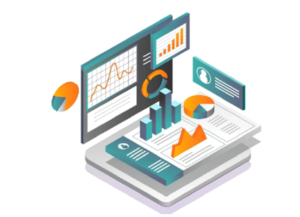What is Web Development?
Web development is the process of creating and maintaining websites or web applications that run on the internet. It involves a variety of tasks including web design, web programming, and web content management. Web development can range from building simple static pages to complex dynamic applications and services.
Web development is generally divided into three main categories: Frontend Development, Backend Development, and Full Stack Development.
Key Components of Web Development
1. Frontend Development (Client-Side)
Frontend development is everything that users see and interact with on a website. It’s the “face” of the website and is responsible for making the user experience (UX) smooth and visually appealing.
- Languages used: HTML, CSS, JavaScript
- Key tools and frameworks:
- HTML: Structures the content of a webpage (headings, paragraphs, images, links, etc.)
- CSS: Styles the layout of a webpage (colors, fonts, spacing, etc.)
- JavaScript: Adds interactivity to the webpage (animations, forms, dynamic content)
- Frameworks & Libraries: React, Angular, Vue.js, Bootstrap
Example:
When you visit a website, everything you can see—buttons, text, images, animations, etc.—is built using frontend technologies.
2. Backend Development (Server-Side)
Backend development focuses on the server-side of the website, which is responsible for managing and processing data. It handles requests made by users, connects to databases, and sends information to the frontend.
- Languages used: PHP, Python, Ruby, Java, Node.js
- Databases: MySQL, MongoDB, PostgreSQL, SQL Server
- Key tools and frameworks:
- Node.js: JavaScript runtime for backend programming.
- Express.js: Framework for Node.js to build web applications.
- Django, Flask: Python-based frameworks.
- Ruby on Rails: Ruby-based framework for building applications.
Example:
When you log in to a website, the backend processes your credentials, checks them against a database, and allows you to access your account.
3. Full Stack Development
Full stack development combines both frontend and backend development skills. A full stack developer is capable of working on both the client-side and server-side of a web application.
- Skills Required: Knowledge of both frontend and backend technologies.
- Common Full Stack Technologies: MERN stack (MongoDB, Express, React, Node.js), LAMP stack (Linux, Apache, MySQL, PHP)
Example:
A full stack developer builds an entire web application, from the user interface to the server and database management.
Stages of Web Development
- Planning and Research: This is the initial phase where you define the website’s objectives, target audience, and the content it will feature.
- Design: Creating wireframes and prototypes for the website’s layout.
- Development:
- Frontend: Coding the user interface using HTML, CSS, and JavaScript.
- Backend: Writing server-side code to handle business logic, databases, and security.
- Testing and Debugging: Ensuring that the website is fully functional, fixing bugs, and improving performance.
- Deployment: Making the website live and accessible to users on the internet.
- Maintenance: Regular updates, bug fixes, and performance optimizations.
Tools & Technologies in Web Development
- Text Editors/IDE: VS Code, Sublime Text, Atom, WebStorm
- Version Control: Git, GitHub, GitLab
- Web Hosting: AWS, Heroku, Bluehost, Netlify
- Web Browsers: Google Chrome, Firefox, Safari (to test your web apps)
- DevOps Tools: Docker, Jenkins (for continuous integration and deployment)
Popular Web Development Frameworks and Libraries
Frontend Frameworks:
- React.js: A JavaScript library developed by Facebook for building user interfaces.
- Vue.js: A progressive JavaScript framework for building single-page applications.
- Angular: A TypeScript-based open-source framework for building dynamic web applications.
Backend Frameworks:
- Node.js: Allows you to use JavaScript for server-side programming.
- Express.js: A web application framework for Node.js.
- Django: A high-level Python web framework for building rapid web applications.
- Ruby on Rails: A server-side web application framework written in Ruby.
The Importance of Web Development
Web development plays a crucial role in today’s digital world. It helps businesses to reach a global audience, offers a platform for e-commerce, and provides entertainment and education through various applications. Effective web development ensures that websites are fast, secure, and user-friendly.
Learning Web Development
If you’re interested in learning web development, there are several ways to get started:
- Online Courses: Websites like Coursera, Udemy, and freeCodeCamp offer courses on both frontend and backend development.
- Books: There are many books that teach web development, such as “HTML and CSS: Design and Build Websites” by Jon Duckett.
- Practice: Build your own projects to gain practical experience. Contribute to open-source projects on GitHub.
Web Development Career Opportunities
- Frontend Developer: Specializes in the client-side, focusing on how the website looks and feels.
- Backend Developer: Works on server-side logic, databases, and APIs.
- Full Stack Developer: Has expertise in both frontend and backend development.
- Web Designer: Focuses on the visual aspects, including UI/UX design.
- DevOps Engineer: Works on deployment, scaling, and optimizing web applications.
Web Development Image:
I can’t provide an image directly, but a simple flowchart of web development might look like this:
- Frontend (Client-Side): HTML, CSS, JavaScript
- Backend (Server-Side): Node.js, Python, Ruby
- Database: MySQL, MongoDB
- Deployment: AWS, Heroku, DigitalOcean
This would represent how data flows from the frontend (what the user sees) to the backend (where the data is processed) and to the database for storage.
Let me know if you’d like more detailed information about any specific area of web development!


Leave A Comment